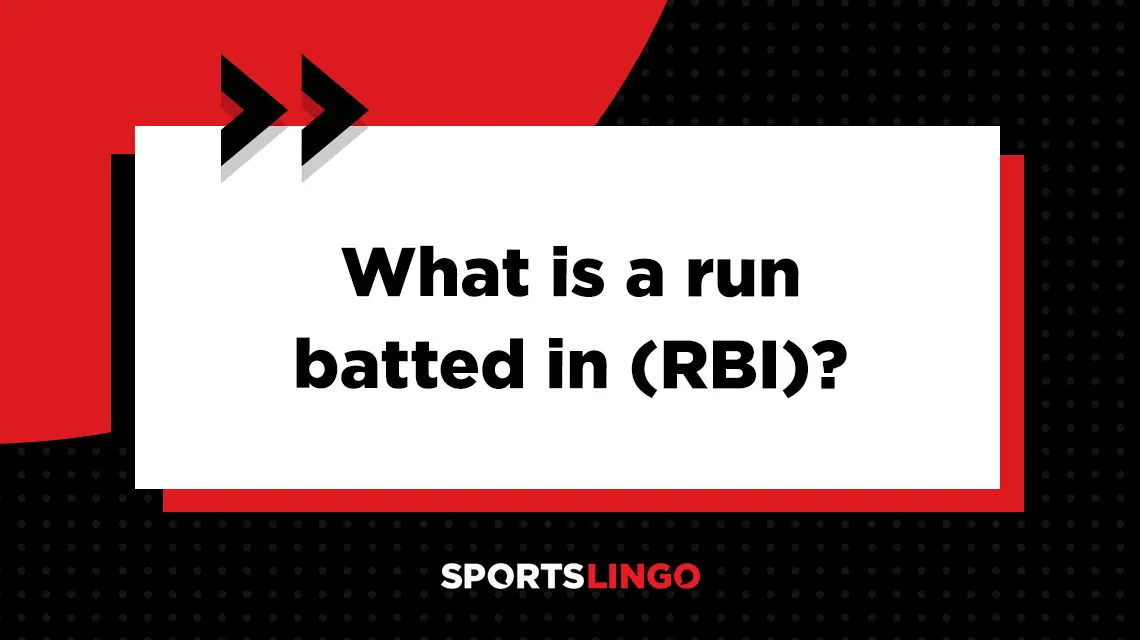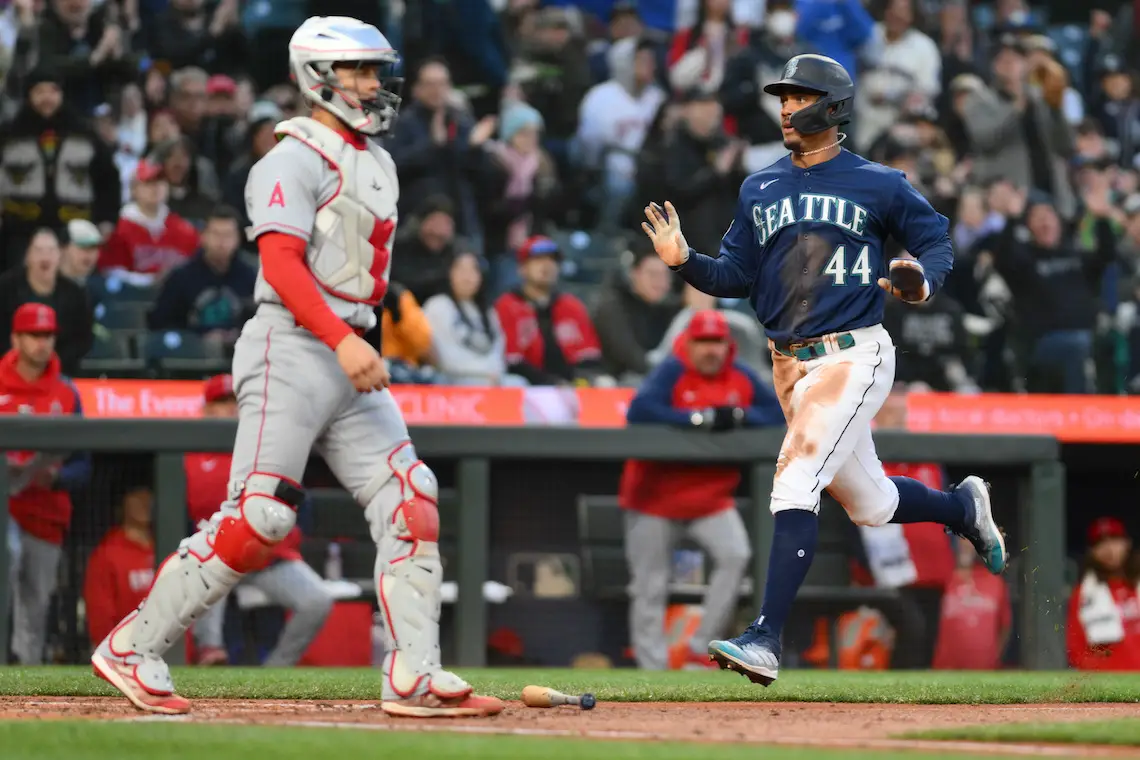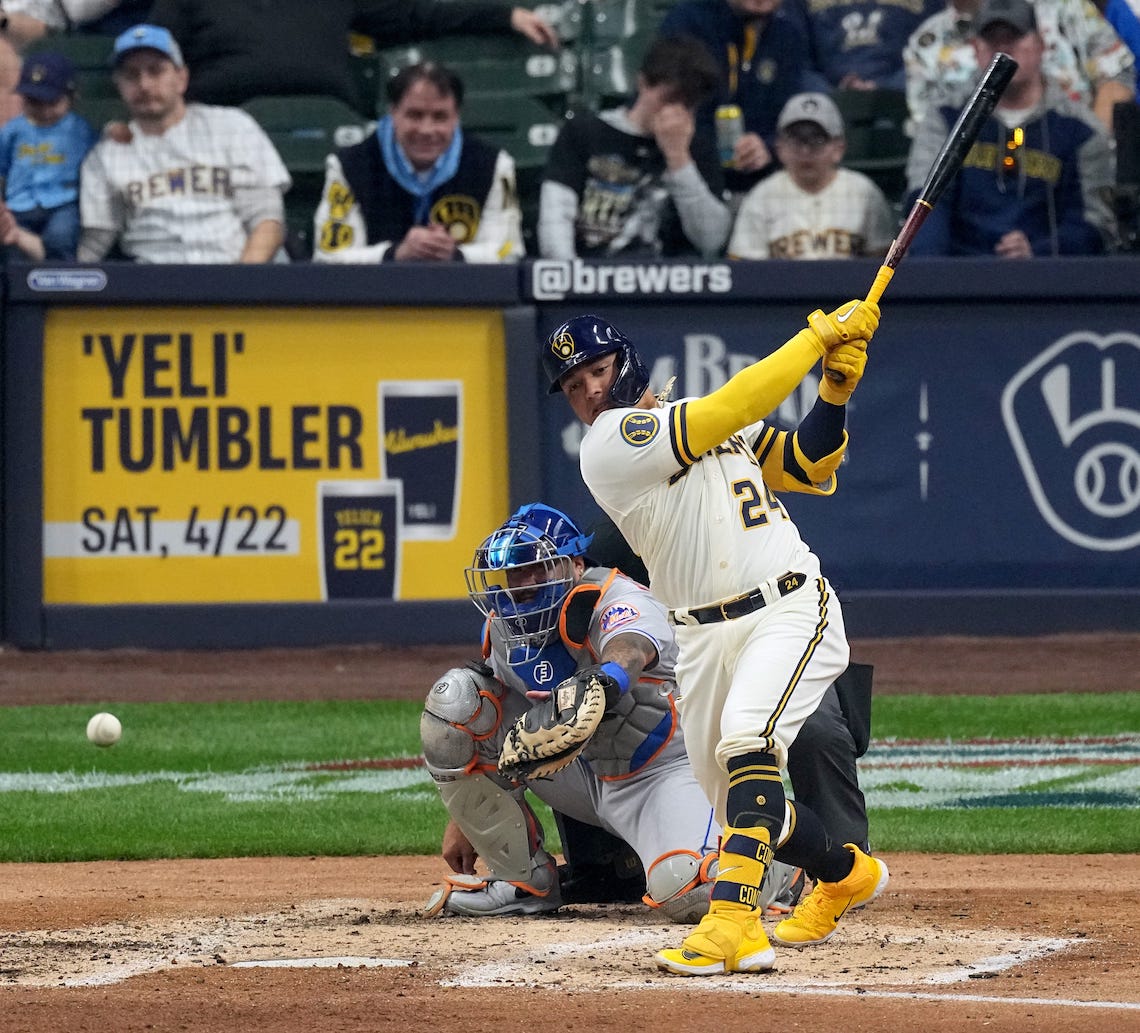
run bat*ted in
What is the definition of run batted in (RBI) in baseball?
1. RBI is a statistic in baseball and softball that gives the batter credit when a baserunner scores as a result of his at-bat. However, a batter will not be given credit for a run batted in if the runner scores on a play that is recorded as an error.
Along with batting average and home runs, runs batted in (RBIs) are among the three statistics included in the triple crown in batting.
What is considered an RBI?
If a player hits a base hit and their teammate who is already on base is able to reach home plate and score a run, the hitter gets an RBI. For instance, if a teammate on third base is able to score when the batter hits the ball into the outfield, it is counted as an RBI.
An RBI is also credited to the batter if they hit a home run. In this case, the batter receives an RBI for driving themselves in for a run. If other teammates were on base when the home run was hit, the total number of runs scored will also be credited toward the RBI total for the batter. The number of RBIs attributed to a batter for a home run hit with bases loaded is four.
Several other batting scenarios are counted as RBIs if they result in runs scored, including:
In certain situations, a batter is advanced to first base automatically. If the bases are loaded with teammates on first base, second base and third base, this results in a run scored by the teammate who was on third base. If the following scenarios occur, an RBI is counted for the batter:
- Walk with bases loaded
- Hit by pitch with bases loaded
What does not count as an RBI?
Batting scenarios which do not result in an RBI include:
What does RBI mean in baseball?
RBI is an acronym that stands for runs batted in. This statistic indicates how many runs were scored as the result of a player’s at-bat.
RBI is a baseball reference statistic that demonstrates how a player contributes to their team in terms of run scores. A higher RBI demonstrates a player’s value as a run-producing batter, even when that comes at the cost of getting themselves out through actions like sacrifices fly balls and sacrifice bunts.
Who gets credit for an RBI?
The RBI is credited to the player whose plate appearance produced the run, whether from a hit, sacrifice or walk. A player is not given credit for an RBI if a run was scored as a result of a defensive error, stolen base, wild pitch, balk or forced double play.

Steven Bisig/USA TODAY Sports
Who is the all-time leader in RBIs in the MLB?
As of the 2023 season, Hall of Fame member Hank Aaron remained the all-time leader in RBIs in Major League Baseball (MLB) history. Aaron accrued 2,297 total RBIs over the course of his career.
Other notable players with over 2,000 RBIs in their career include Babe Ruth, Albert Pujols, Alex Rodriguez and Cap Anson, with Barry Bonds coming in just under that benchmark with 1,996 career total RBIs.
What is the most RBIs in a season?
The MLB single-season RBI leader as of 2023 is Hack Wilson. Known as a power hitter, Wilson racked up 191 RBIs during the 1930 season while playing for the Chicago Cubs.
The top single-season RBI records are:
- Hack Wilson, 1930: 191
- Lou Gehrig, 1931: 185
- Hank Greenberg, 1937: 183
- Jimmie Foxx, 1938: 175
- Lou Gehrig, 1927 and 1930: 173
What is the most RBIs in a game in baseball?
The highest RBI record attributed to one player during a single game is 12. Two players have achieved this feat, both of whom played for the St. Louis Cardinals at the time they recorded 12 RBIs in one game.
Jim Bottomley first achieved this feat on September 16, 1924 in a game against the Brooklyn Dodgers. He broke a previous record of 11 RBIs in one game which had been set in 1892 by Wilbert Robinson, who happened to be manager of the Dodgers during this historic game. Bottomley’s performance included three singles, two home runs and one double.
Mark Whiten matched Bottomley’s record on September 7, 1993 in a game against the Cincinnati Reds. Whiten hit four home runs and became the 12th player in MLB history to hit that many homers in one game.
What is the average RBI in baseball?
The average RBIs per game in the MLB is generally around 4 to 4.5. In the 2022 season, the average RBIs per game was 4.09. In 2021, the average was 4.32.
What is a good RBI in baseball?
Generally, a player who has 100 or more RBIs over the course of the regular season is thought to be performing above average.
How do you find RBIs in baseball?
The MLB stats page is an excellent resource for up-to-date baseball statistics, including RBIs. Another helpful resource that makes it easy to search by player for RBI stats is Baseball Reference.
What is the triple crown in batting?
The triple crown in batting is the name of a special achievement in baseball. To earn the triple crown in batting, a player must be the league leader at the end of the season in all three of the following baseball statistics:
- Batting average (BA)
- Home runs
- Runs batted in (RBIs)
In modern baseball, it’s rare for a player to earn the triple crown in batting. Few players have both a high batting average and are ranked among the top home run hitters. In addition, relief pitchers are much more common today than they were decades ago, which means that batters face pitchers with fresh arms more often and don’t get as many innings to feel out a pitcher’s style.
Past winners of the triple crown in batting include:
- Miguel Cabrera, Detroit Tigers (2012)
- Carl Yastrzemski, Boston Red Sox (1967)
- Frank Robinson, Baltimore Orioles (1966)
- Mickey Mantle, New York Yankees (1956)
- Ted Williams, Boston Red Sox (1947 and 1942)
- Joe Medwick, St. Louis Cardinals (1937)
- Lou Gehrig, New York Yankees (1934)
There is also a triple crown in pitching awarded to the player who leads the league in wins, strikeouts and earned run average (ERA).
What is OPSBI?
One baseball statistic which is calculated using RBI is on-base plus slugging plus runs batted in (OPSBI). The OPSBI statistic combines on-base percentage and slugging percentage with the number of runs batted in. Babe Ruth holds the records for the highest OPSBI for a single-season performance (1,529) and for career performance (3,381).

Mark Hoffman/USA TODAY Sports
Is RBI a good way to evaluate batters?
In recent years, some baseball analysts have questioned whether runs batted in is really an accurate measure of a player’s value and hitting ability. One argument against the use of RBI is that it is too dependent on the performance of other players, including a player’s teammates, the pitcher, and the defensive players.
Teammate performance
If the preceding batters have failed to get hits or get on base, then even a great hitter will be unable to record any RBIs (with the exception of a home run, since their own run would count as an RBI).
Similarly, even if other teammates have gotten on base leading up to a player’s at-bat, the chance of getting an RBI may be influenced by a runners’ ability to get to home plate quickly enough to evade an out. This means that a player’s potential for recording RBIs is dependent on how his teammates perform, both in hitting and baserunning.
Batting order is another consideration when determining whether RBI is a useful statistic. If a player is positioned close to the beginning of a batting order, there will be fewer opportunities for their teammates to get on base before their first at-bat.
On the other hand, a player who is directly preceded in the batting order by several teammates with excellent on-base percentages will be more likely to be set up for recording RBIs each time they make a plate appearance. Again, this means their potential for driving in runs is significantly affected by the performance of their teammates and not solely a measure of their own batting ability.
Pitcher performance
The pitcher’s performance affects a player’s RBI potential as well. If a player gets a walk with the bases loaded, they automatically advance to first base and the player that was on third base scores. This has nothing to do with a batter’s good performance, but rather the poor performance of a pitcher. Even so, the batter still gains an RBI from the play.
Defense performance
The way defensive players perform can also affect whether a batter gets an RBI on certain plays. After a hit, an infielder might choose to tag a player running from third base to home rather than throwing it to first base to get the batter out. The split-second decision of the infielder means that the player doesn’t get the RBI.
Alternative batting statistics
The above examples indicate that RBI may not be the best way to judge a player’s value as a batter. It doesn’t mean that RBI is useless as a statistic, but rather that it’s important to consider other batting stats as well when determining the overall value of a player’s batting abilities.
Some of the alternative batting statistics which can be used to gauge how well a player bats include:
- Batting average: How likely a batter is to get a hit during an at-bat
- On-base percentage: How often a player reaches base per plate appearance
- Slugging percentage: The average number of bases a player reaches per at-bat
Examples of how run batted in is used in commentary
1. With that single into the infield, the batter knocks in another run and has three total RBIs on the night.
2. The baserunner crosses the plate for another run and they’re going to mark that an E-4. The batter will not be credited with a run batted in.
Sports the term is used
1. Baseball
2. Softball
Also seen as:
1. Ribbie
2. Runs driven in
3. Runs knocked in
4. Runs plated
5. Ribeye
Abbreviated as:
1. RBI